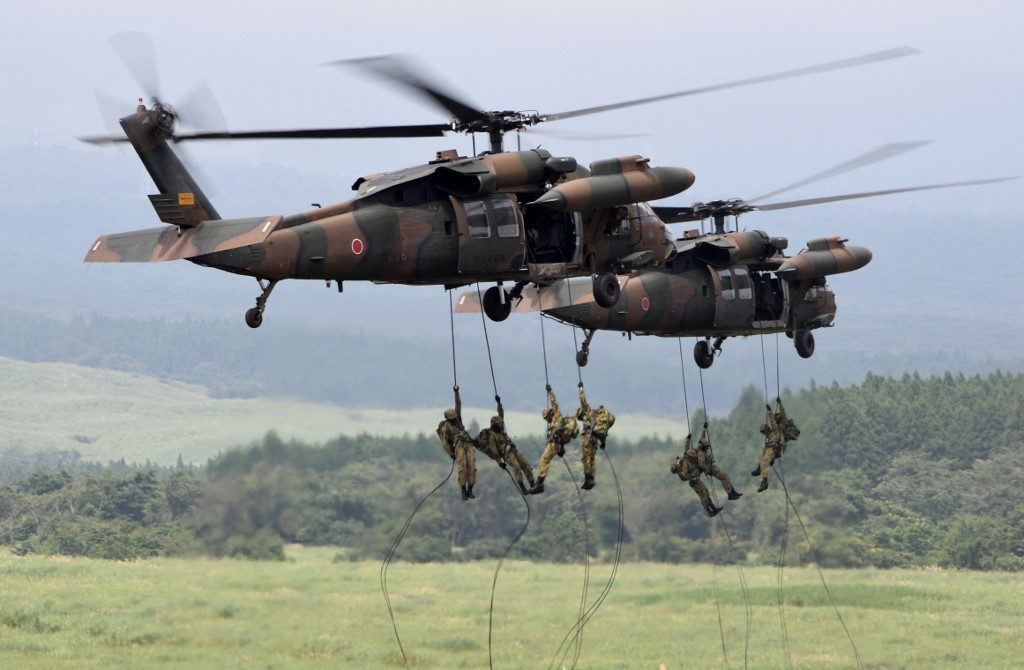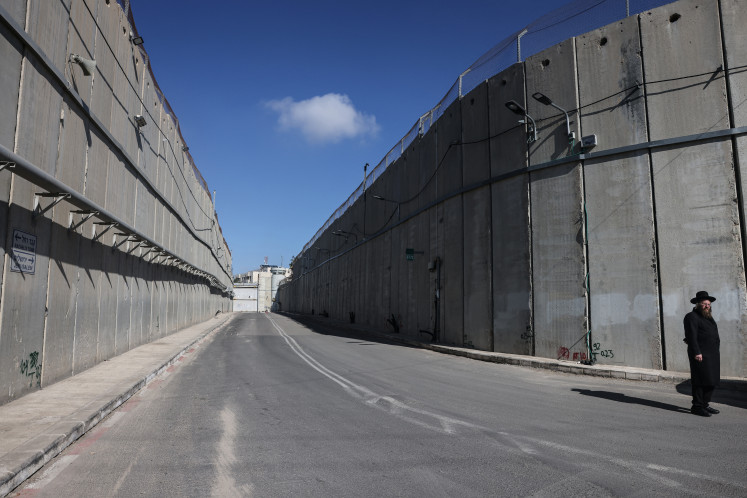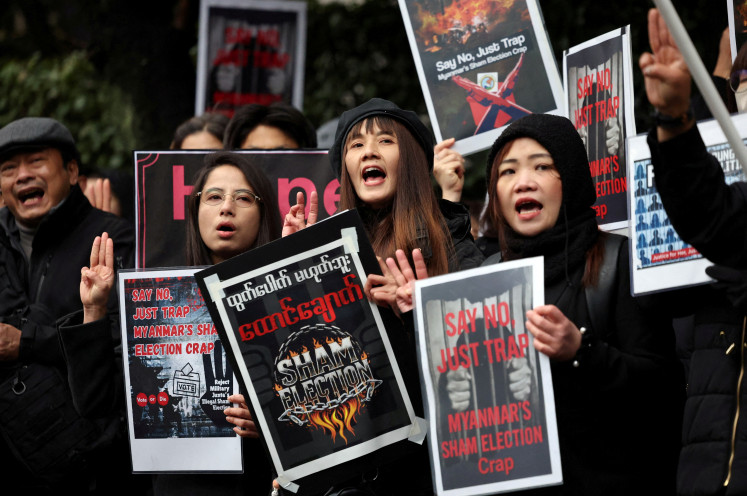Popular Reads
Top Results
Can't find what you're looking for?
View all search resultsPopular Reads
Top Results
Can't find what you're looking for?
View all search resultsUS helicopters hold first live-fire drills in South Korea since 2019
Training resumed at the Rodriguez Live Fire Complex just south of the heavily fortified Demilitarised Zone (DMZ) along the border, after having been cancelled in recent years when those living nearby complained about noise and safety concerns.
Change text size
Gift Premium Articles
to Anyone
 Japan Ground Self-Defense Force troops descend from helicopters during an annual live-fire exercise at the Higashi-Fuji firing range in Gotemba, at the foot of Mount Fuji in Shizuoka prefecture on August 24, 2017. The annual drill involves some 2,400 personnel, 80 tanks and armoured vehicles and some 20 aircraft and helicopters.
(AFP/Toshifumi KITAMURA )
Japan Ground Self-Defense Force troops descend from helicopters during an annual live-fire exercise at the Higashi-Fuji firing range in Gotemba, at the foot of Mount Fuji in Shizuoka prefecture on August 24, 2017. The annual drill involves some 2,400 personnel, 80 tanks and armoured vehicles and some 20 aircraft and helicopters.
(AFP/Toshifumi KITAMURA )
U
S Army Apache attack helicopters based in South Korea are holding live-fire drills with rockets and guns for the first time since 2019, as the allies step up military exercises amid tension with North Korea.
Training resumed at the Rodriguez Live Fire Complex just south of the heavily fortified Demilitarised Zone (DMZ) along the border, after having been cancelled in recent years when those living nearby complained about noise and safety concerns.
Over the past week, AH-64E v6 Apache helicopters engaged in certification drills, video images and photographs released by the U.S. 2nd Infantry Division showed.
"Crews are qualifying during both day and night on the AGM-114 Hellfire missile, Hydra 70 rocket and 30mm canon," the division said on Twitter.
The drills come as the allies announced they would resume other live field training during joint exercises scaled back for several years because of COVID-19 and efforts to reduce tension with the North.
South Korean President Yoon Suk-yeol, who took office in May, has vowed to "normalise" joint drills and boost deterrence against the North.
The Apache drills will also measure the level of noise they generate, in response to the complaints, a defence ministry official said.
US Forces Korea (USFK) did not immediately respond to a request for comment.
The lack of live-fire training had been a "big problem" for the US pilots and crews, a former senior US defence official said.
"They were less ready by the time they left (South Korea) than when they arrived," he told Reuters, speaking on condition of anonymity to discuss US military operations.
During the period of no live-fire drills, the Pentagon paid to send Apache crews back to the United States for qualification exercises every quarter, he added.
The problem was worsened when the US military permanently stationed a previously rotational Apache unit in South Korea in February, he said.
The administration of former South Korean President Moon Jae-in had no interest in overcoming the political problems and resuming the drills, the former official said, predicting that Yoon was likely to make more progress.









